 Indonesia’s Concerns
Indonesia’s Concerns
In mid-July, Indonesia’s President Joko Widodo signed a regulation which in effect will give the Indonesian Government greater power to disband Islamist organisations deemed threats to the nation, as it seeks to control the growing influence of hardline Islamic groups. On 19th July, just one week following this first announcement, the Indonesian Government shook of its lethargy and complacency by banning Hizb ut-Tahrir, an organisation banned in parts of Europe and the Arab world, and in China, and which has advocated the establishment of a global Islamic caliphate, by whatever means necessary.
The regulation allows the Government to bypass the lengthy process currently in place before any organisation can be dissolved. Senior Indonesian security minister Wiranto (retired Army General and now the Coordinating Minister for Political, Legal and Security Affairs) confirmed that the Government is looking at ways to disband Hizb ut-Tahrir, which has openly declared its wish to see the adoption of sharia law and to declare Indonesia a caliphate.
 Under existing Indonesian law, such organisations must be formally reprimanded and their activities suspended, before a court case to have it dissolved can begin, essentially a process that can take years in Indonesia’s snails-pace legal system.
Under existing Indonesian law, such organisations must be formally reprimanded and their activities suspended, before a court case to have it dissolved can begin, essentially a process that can take years in Indonesia’s snails-pace legal system.
Mr. Wiranto said the new regulation simplifies this process, giving the Justice Ministry power to both issue and revoke a mass organisation’s permit. “This regulation is not intended to limit people’s rights to assemble or curb mass organisation. This regulation is not intended to undermine Islamic organisations. The regulation was issued to preserve the nation’s unity and harmony”.
Mr. Wiranto said existing law was not adequate to prevent the spread of ideologies not in line with the national ideology, Pancasila, and the constitution. “Organisations which are against Pancasila pose a threat to the nation’s existence and can create conflicts in society. We have to protect the nation’s integrity by preventing the spread of anti-Pancasila organisations.”
The amendment came after months of sectarian tensions surrounding this year’s Jakarta gubernatorial election, in which reformist governor Basuki Tjahaja Purnama (Ahok), despite his popularity and early clear favouritism, was defeated and later jailed for the absurd charge of blasphemy brought against him by Islamic extremists, who called on Muslims not to re-elect the Christian and ethnic Chinese protege of Mr. Joko.
The ugly Jakarta election undermined the nation’s reputation for practising a moderate form of Islam and finally compelled the Indonesian government to fight back against Islamic hardliners whose power and political influence had been greatly underestimated. Hizb ut-Tahrir was at the forefront in mobilizing the masses against Governor “Ahok” Purnama and on a number of occasions threatened violence against Governor Ahok’s supporters.
Though Human Rights Watch condemned the Government’s move, calling it a “troubling violation” of the rights to freedom of association and expression, Indonesia’s President Joko has been troubled by the surge of Islamist influence, and the willingness of radical groups to posture aggressively in pursuit of their Islamist agendas.
Hizb ut-Tahrir Indonesia spokesman Ismail Yusanto said the organisation planned to have the new regulation repealed by the Constitutional Court. Parliament can also veto the new regulation within six months. “Hizb ut-Tahrir strongly rejects this regulation. We are not breaking any laws. We are simply preaching Islamic values. Establishing a caliphate is part of Islamic teachings,” he said.
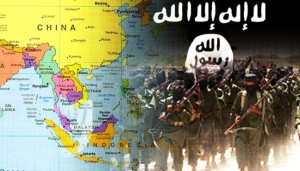 There has been no immediate comment from Hizb ut-Tahrir since the Government announced the banning of the organisation but undoubtedly the HuT leadership will not accept the ban without some form of resistance.
There has been no immediate comment from Hizb ut-Tahrir since the Government announced the banning of the organisation but undoubtedly the HuT leadership will not accept the ban without some form of resistance.
Many of the issues currently in play in Indonesia specifically, but also the wider SE Asia region, can be attributed to the propagation of the conservative Wahhabi brand of religious teaching sponsored by the Government of Saudi Arabia.
Background
Saudi Arabia is locked into its conservative Sunni Wahhabi ideology, and committed to its spread abroad. Since the mid-18th century, when the Saudis formed an alliance with a zealous cleric, Muhammad al-Wahhab, the Saudi monarchy has depended on religious authorities for their legitimacy to rule. In return for that legitimacy, Saudi rulers have ceded education, law and missionary activities to the Wahhabi clergy.
Extreme Islam regionally has also been advanced by the Sunni rivalry with theocratic Shia Iran for leadership of the Muslim world, leading to a policy of stricter Sunni Islam to appease jihadist elements. Motivated initially to bring jihad to the West, those jihadists eventually turned their attention to attacks on Saudi soil, where attacks on Shia mosques have inflamed the restive Shia minority in the oil-rich Eastern Province.
Though the Saudi Kingdom is trying to de-radicalise jihadis returning from the Mid-East war zones, it is also engaged in a protracted war with Iranian proxies in Yemen, and has watched with dismay as Iran attempts to carve a land corridor through Iraq, Lebanon and Syria across to the Mediterranean.
Leading members of the Saudi ruling class have repeatedly applauded Wahhabism for its Salafi piety, its adherence to the original practices of Islam, and the movement’s vehement opposition to the Shia branch of Islam.
Commencing in the 1970s, with the help of funding from petroleum exports and other factors, Saudi charities started funding Wahhabi schools (madrassas) and mosques across the globe, and the Wahhabi movement experienced explosive growth.
According to the US State Department, over the past four decades, Riyadh has allegedly invested billions of its petro-dollars into charitable foundations, in an attempt to replace mainstream Sunni Islam with the harsh intolerance of its Wahhabism.
European intelligence analysts estimate that 15-20% of this Saudi funding has been diverted to IS, al-Qaeda and other violent jihadists, and today the Wahhabi movement has worldwide influence, inspiring the ideology of extremists worldwide.
Origins of the Wahhabi Doctrine
Founded by Mohammed Ibn Abd al-Wahhab (1703-92) around 1745, Wahhabism is an exceptionally virulent and militant interpretation of Islam that stresses the absolute sovereignty of Allah. Ibn Abd al-Wahhab rejected any reliance on the intercession of Mohammed, and denounced pilgrimages to saints’ tombs, declaring this to be idolatry, and declared that domes or shrines honouring such saints should be destroyed.
As one opposed to innovation, al-Wahhab advocated a return to what he saw as the purity of the first (7th century) generation of Islam, the salaf and the teaching of any school of law. His ideas were deeply influenced by the teachings 400 years earlier of Ibn Taymiyah (1263-1328), who saw the State as an adjunct of religion and who opposed discursive theology. Ibn Taymiyah demanded the excommunication of any who professed Islam without rigour, a stricture that has been imitated in the 20th Century by modern Islamist movements which excommunicate those who profess Islam without following it rigorously, or who suggest that Islam should modernize.
Over time, Wahhabism has evolved into an all-encompassing political-religious theology that considers all other faith groups deviant, that has no tolerance for other cultures, no respect for human rights, no love for democracy and an abiding distaste of Western values. Wahhabism is at its core harsh, puritanical, unforgiving and violent.
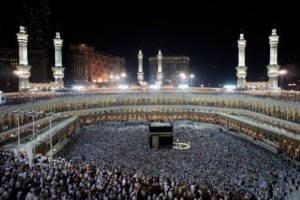 The ultimate goal of Wahhabism is one global community with one creed (Wahhabism) and ruled by one Khalifah (ruler), presumably the House of Saud. It makes for a grand strategy not just for hegemony in the Middle East but for global domination. Though IS could be seen as ultra-Wahhabists, and therefore deserving the sympathy and support of Saudis, in reality IS forcefully denies the al-Saud family’s authority to rule, and seeks to undermine the legitimacy of the Saudi King and Saudi Royal Family, many of whom it considers to be corrupted by the modern world and the self-indulgent luxurious trappings of power.
The ultimate goal of Wahhabism is one global community with one creed (Wahhabism) and ruled by one Khalifah (ruler), presumably the House of Saud. It makes for a grand strategy not just for hegemony in the Middle East but for global domination. Though IS could be seen as ultra-Wahhabists, and therefore deserving the sympathy and support of Saudis, in reality IS forcefully denies the al-Saud family’s authority to rule, and seeks to undermine the legitimacy of the Saudi King and Saudi Royal Family, many of whom it considers to be corrupted by the modern world and the self-indulgent luxurious trappings of power.
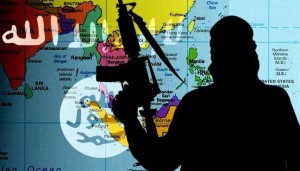 Wahhabists enforce public attendance at prayers, forbid shaving and the smoking of tobacco, and Wahhabi mosques are plain and unadorned. Wahhabi ideology dominates the Arabian Peninsula with the political support of the Al Saud, the family that to this day rules Saudi Arabia through a hereditary monarchy.
Wahhabists enforce public attendance at prayers, forbid shaving and the smoking of tobacco, and Wahhabi mosques are plain and unadorned. Wahhabi ideology dominates the Arabian Peninsula with the political support of the Al Saud, the family that to this day rules Saudi Arabia through a hereditary monarchy.
The Threat Today
Violent jihadi groups drawing inspiration and support from Al-Qaeda and ISIS have sprouted in the Philippines, Indonesia, Malaysia and Thailand. Armed attacks, suicide bombers, beheadings and other violence against innocent civilians have occurred across SE Asia.
Young South-East Asian Muslims gravitated to Syria and Iraq to join some of the most violent and extremist jihadi groups (al-Qaeda, Nusra Front, and IS). Indonesian intelligence organisations conservatively calculate that 500 Indonesians, probably more, joined the ranks of IS. It has been reported from Syria that Indonesian and Malaysian militants fighting there formed a military unit specifically to accommodate Malay-speaking IS fighters (Katibah Nusantara Lid Daulah Islamiyah – Malay Archipelago Unit for the Islamic State in Iraq and Syria) and have participated in military operations against the Iraqi and Syrian militaries.
The rise and subsequent demise of IS in Syria and Iraq has created a pool of combat-trained and indoctrinated recruits for eventual deployment back home in SE Asia, and with religious extremism now reaching alarming levels within SE Asia’s Muslim societies, this will have profound political and security implications for the entire SE Asia region.
Malaysia, for example, once seen as exercising a moderate brand of Islam, is now engaged internally in acrimonious and polarising debate about the imposition of shariah law, a path that could drive the country to the brink of chaos. Malaysian Muslims who speak out against shariah are threatened, intimidated, and harassed. The very fact that a constitutionally secular and democratic nation like Malaysia is even discussing amputating limbs, beheading, stoning, and other primitive medieval punishments is astonishing to say the least, and a cause for concern among more moderate Muslims in the country.
Fundamental questions are now being asked, by concerned politicians and security chiefs in the region, about the causes of Islamic extremism and the emerging culture of intolerance manifesting in the SE Asia region. Security experts in the SE Asia and Australasia region increasingly point to the Wahhabi ideology, aggressively exported by Saudi Arabia, as the single biggest cause of Sunni extremism in the region.
Over the past 4 decades, thousands of mosques, seminaries, universities, schools and community centres have been built, and thousands of preachers, teachers and activists have been educated, trained and dispatched across the world, carrying with them Wahhabi-approved textbooks and other literature.
The Saudi-Wahhabi link has such a stranglehold on Sunni religious discourse that its views now predominate, and the House of Saud has deftly used its unique position within Islam, as Custodian of the Two Holy Mosques, to leverage strategic influence, respect and power over the global Islamic community.
Wahhabism provides the theological underpinning for almost every violent jihadi group, is behind much of the movement to replace secular democratic institutions with fundamentalist Islamic ones, and is the main driving force behind the radicalization of young Muslims in the world today. And as these decades of Wahhabi infiltration, indoctrination and influence come to the boil, it is now casting its long shadow over Southeast Asia.
Saudi Arabia has built up a significant cadre of Wahhabi trained academics, preachers and teachers across the region. Many of them are now in the forefront of movements and lobby groups agitating for greater Islamisation, demanding the imposition of Sharia law, pushing for stricter controls on other faiths, and working behind the scenes to influence official policy and shape public opinion. Saudi ideological belief in the form of Wahhabism is unfolding across SE Asia with little in the way of serious resistance.
 Certainly, most of Southeast Asia’s radical groups (such as Jemaah Islamiyah, Abu Sayyaf, Laskar Jihad, and Jemaah Salafiyah) have been influenced by the Wahhabi ideology and have aligned themselves with IS.
Certainly, most of Southeast Asia’s radical groups (such as Jemaah Islamiyah, Abu Sayyaf, Laskar Jihad, and Jemaah Salafiyah) have been influenced by the Wahhabi ideology and have aligned themselves with IS.
Intriguingly, the Indonesia and Malaysia Governments appear to have been too complacent about the increasing spread of the Wahhabi ideology and have been even slower to react to the threat, appearing to have been, at least until recently, in a state of denial about the magnitude of the problem, responding only with half-hearted measures to address the more immediate threat posed by militant groups, while leaving the Saudi-Wahhabi infrastructure intact, in all likelihood intimidated by Saudi Arabia’s religious credentials and swayed by its petrodollar wealth. When King Salman recently visited Indonesia, he arrived with an entourage of 1500, to a warm welcome from President Joko Widodo.
Such security complacence and negligence has been compounded by complicity, with some political leaders exploiting religion for their own purposes. In Malaysia, a dangerous political game is being played with the Sharia issue despite the enormous damage it is doing, while in Brunei, the Sultan has sought to outmaneuver the Islamists, as well as consolidate his own position, by pre-emptively declaring an Islamic state, complete with Sharia law and restrictions on other religious groups. Only time will tell whether such a strategy will placate the extremists, or merely feed their appetite for more concessions.
There is now a real danger that unless Southeast Asian governments act quickly and decisively, the region could end up a zone of violence, instability, and stagnation, as opposed to the vibrant, stable community that regional Governments have spent years developing.
Saudi’s growing influence in Indonesia
In Jakarta Indonesia, the Saudi Arabia-funded Institute for the Study of Islam and Arabic (LIPIA, an acronym of its local name Lembaga Ilmu Pengetahuan Islam dan Arab Indonesia) has produced some of Indonesia’s more prominent radicals and terrorist leaders.
 Established in 1980 by Saudi royal family decree, it offers free university degrees to poor students, segregates female from male students, conducts lessons in Arabic by predominantly Saudi lecturers, enforces strict dress codes for both men and women, and forbids music, television, wearing jeans and “loud laughter”. LIPIA is considered the centrepiece of Saudi Arabia’s campaign in Indonesia to convert Indonesians to Wahhabi Islam and the Salafi movement.
Established in 1980 by Saudi royal family decree, it offers free university degrees to poor students, segregates female from male students, conducts lessons in Arabic by predominantly Saudi lecturers, enforces strict dress codes for both men and women, and forbids music, television, wearing jeans and “loud laughter”. LIPIA is considered the centrepiece of Saudi Arabia’s campaign in Indonesia to convert Indonesians to Wahhabi Islam and the Salafi movement.
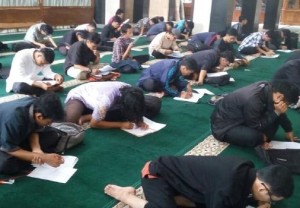 All LIPIA students learn the teachings of Ibn Taymiyah, the 14th century Muslim reformer, whose medieval texts remain the dominant influence on al-Qaeda and other jihadi groups.
All LIPIA students learn the teachings of Ibn Taymiyah, the 14th century Muslim reformer, whose medieval texts remain the dominant influence on al-Qaeda and other jihadi groups.
Islamist radicalism and violence are nothing new to Indonesia. In 2002, the Indonesian branch of al-Qaeda (Jemaah Islamiyah) perpetrated the Bali bombings, killing in the process more than 200 people, including 88 Australians.
Indonesian security and counter-terrorism officials recognise that in the years since the Bali bombings, Jemaah Islamiyah has been building a secret armed unit with a growing pool of young militants, raising fears that the terror group is far from being a spent force.
Regional security analysts have coined the term “neo-JI” to describe the new threat emerging from remnants of the group behind the Bali bombings, while some also believe that JI is poised to strike again, having regrouped after having been decimated by Indonesian security agencies following the 2009 attacks on the popular JW Marriott and Ritz-Carlton hotels in Jakarta.
JI’s lack of action over the last decade does not mean the group has renounced terrorism, rather it indicates that the group may have adopted a longer term and strategic posture towards participation in any future jihad activities.
Estimates are that JI may now comprise as many as 2,000 members, similar to its peak strength at the turn of the millennium, and there have been reports that the group has been successful in conducting recruitment on local university campuses.
As well as the LIPIA university, Saudi Arabia has financially supported dozens of boarding schools and built 150 mosques. The schools have included jihadi breeding grounds like Al-Mukmin Islamic boarding school in Solo, Central Java, and the Al-Islam boarding school in eastern Java, which gained notoriety as a production line for JI terrorists. Two teachers from Al Islam school, Ali Imron and Mukhlas, were members of the JI group that created havoc in 2002 in Bali.
LIPIA university has produced its own alumni of violent, racial Islamic extremists. Since the university opened, LIPIA graduates have created Sunni Islam groups in Indonesia connected to Saudi Arabian Wahhabi Islam.
The Islamic Defenders Front (Front Pembela Islam or FPI) is modelled on the Saudi religious police and its founder is LIPIA alumnus Habib Rizieq. Like all of LIPIA’s best students, Rizieq was granted a Saudi Government scholarship to continue his studies in Riyadh.
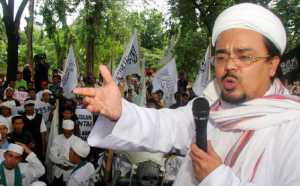 Fellow LIPIA graduate Jafar Umar Thalib founded Indonesian Salafi Warriors of Jihad. Known as Laskar Jihad, or LJ, they fought Christians on the Moluccan Islands while dressed in Saudi-style uniforms.
Fellow LIPIA graduate Jafar Umar Thalib founded Indonesian Salafi Warriors of Jihad. Known as Laskar Jihad, or LJ, they fought Christians on the Moluccan Islands while dressed in Saudi-style uniforms.
Unless the Indonesian and Malaysian Governments do more effective work to diminish the influence of Saudi Wahhabi teaching in their countries, they run the risk of ending up like Pakistan, where Saudi funding over the past 3 decades has converted that society, based on pan-Islamic unity, from a generally tolerant one, to one wracked by sectarian hatred and violence, setting Sunni against Shia (and Ahmadi), and where the charge of blasphemy now carries the fearsome power to eliminate opposition based on nothing more than unproven accusation.


Leave a Reply